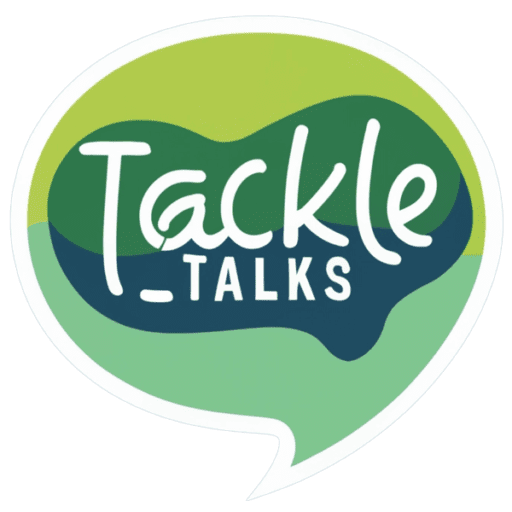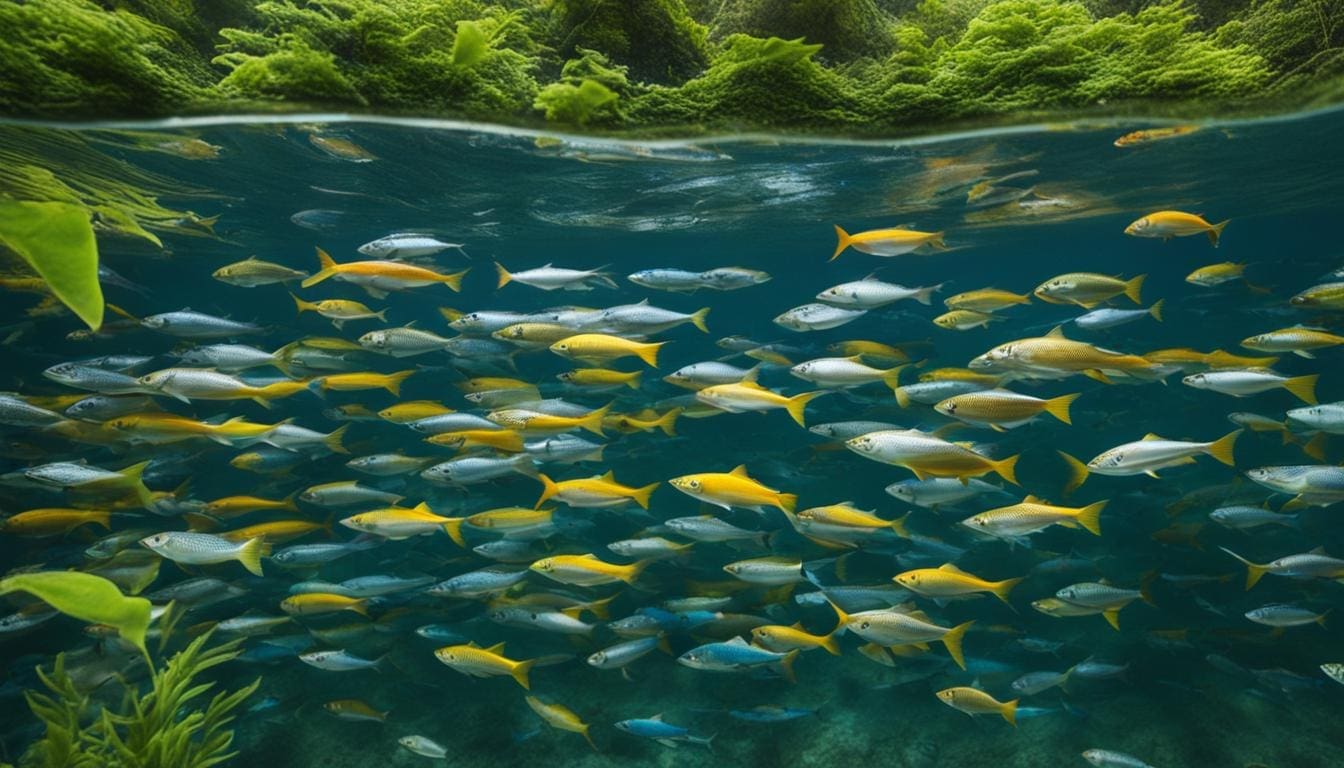As environmental awareness weaves into the fabric of our daily lives, sustainable angling tips have become more than a trend – they’re a necessity. Anglers across the nation are turning to eco-friendly bait options, evolving the practice of fishing into a sustainable activity that respects the delicate balance of our ecosystems. This shift in mindset is not only crucial for the conservation of our natural waters but is also necessary for the longevity of fishing sustainability itself. With an informed approach to selecting tackle and bait, each fishing trip can contribute positively to environmental stewardship.
Key Takeaways
- Adopting eco-friendly bait options contributes to a sustainable angling future.
- Using biodegradable tackle reduces the ecological footprint of fishing activities.
- Compliance with fishing regulations is a cornerstone of responsible angling.
- Advancements in sustainable tackle technology are enabling eco-conscious fishing choices.
- Environmentally informed bait selection supports aquatic conservation efforts.
- Recycling and proper disposal of fishing gear are vital for sustainable angling practices.
Understanding the Impact of Traditional Fishing Tackle on Ecosystems
Conventional fishing gear has long been composed of non-biodegradable materials with a significant environmental footprint. With the rise in awareness about the need for environmental conservation, the impact that these traditional fishing practices have on our ecosystems has come under increased scrutiny. Anglers and manufacturers alike are now turning towards solutions that align with the principles of sustainability.
These materials used in fishing tackle, from nets to lines to lures, pose a severe threat to marine and freshwater habitats. The materials not only linger in the environment for centuries but also pose immediate risks to wildlife that accidentally ingest them or become entangled.
The Environmental Cost of Non-Biodegradable Fishing Gear
One of the stark realities of angling involves the materials that make up much of our fishing gear. Predominantly crafted from durable, slow-degrading plastics, non-biodegradable fishing tackle introduces plastic pollutants into our waterways, leading to the disruption of aquatic life cycles and ecosystems. The environmental impact of lost or discarded fishing gear, such as nets and lines, stretches far beyond the visible, contributing to a type of pollution that may persist for generations.
Consequences of Lead and Plastic Pollutants in Our Waters
Not only are non-biodegradable plastics a concern, but the presence of lead in traditional fishing weights and sinkers adds another layer of ecological harm. These materials act as plastic pollutants when released into water bodies, creating a toxic environment for aquatic flora and fauna. The shift towards lead-free sinkers and biodegradable fishing baits is critical in mitigating these consequences, paving the way for a more sustainable form of the sport. The development of gear that does not jeopardize the health of our waterways, nor the species that inhabit them, has become an imperative component of modern fishing.
- Traditional fishing gear contributes to persistent environmental pollution
- Non-biodegradable materials endanger wildlife through ingestion and entrapment
- Biodegradable alternatives to fishing gear are essential in mitigating environmental damage
- Lead-free sinkers represent a move toward safer angling practices
- Increasing availability of eco-friendly tackle options empowers anglers to make greener choices
Regulations and Licenses: Fishing with a Conscience
Embracing conservation-minded fishing means much more than selecting eco-friendly gear; it’s a comprehensive approach involving strict adherence to fishing regulations. Understandably, the complexities of fishing laws can be bewildering due to variation by state. However, staying informed about these regulations is not just a legal responsibility—it’s a moral obligation that supports the health of our aquatic ecosystems. Now more than ever, the call to get a fishing license, adhere to bag limits, and observe seasonal guidelines resonates deeply with environmentally responsible fishing enthusiasts.
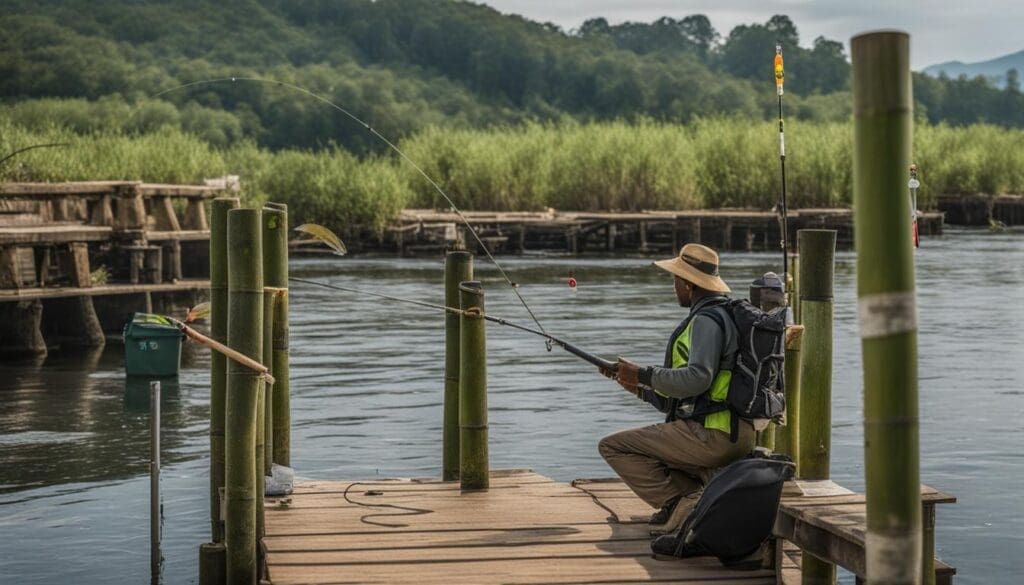
To elucidate, each state within the United States—from the sunny shores of California to the vibrant coastlines of Florida and Texas—has fishing laws that align with their unique ecosystems. These legal frameworks ensure that while we indulge in the thrill of the catch, we remain custodians of nature’s delicate balance. Let’s dive into a comparison of how different states regulate this age-old practice, thereby ensuring its longevity for generations to come.
| State | Fishing License Requirement | Bag Limits | Seasonal Restrictions |
|---|---|---|---|
| California | Required for ages 16 and older | Varies by species | Stream fishing closed from Nov-April for certain species |
| Florida | Required for both freshwater and saltwater | Varies widely; some species have year-round limits | Snook season opens twice a year; Spiny lobster mini-season in July |
| Texas | Required; special endorsements may be needed for certain waters | Determined by water body and species | Gulf coast has specified seasons for red snapper and oysters |
As evident from the table, all three states require anglers to possess a valid fishing license, each with its distinct set of rules. Adhering to bag limits is not merely a legal formality; rather, it is a vital conservation tool. By limiting the number of fish caught, we help protect against overfishing and contribute to the nurturing of fish populations. Seasonal restrictions, too, play an essential role as they provide time for fish to breed and mature, ensuring the ecosystem’s health.
- Ensure you understand and comply with the specific fishing regulations of the state you are fishing in.
- Prioritize acquiring a fishing license before you set out to fish.
- Respect bag limits and seasonal restrictions – they are there for a reason.
- Research any special requirements that may apply to certain species or bodies of water.
As part of the fishing community, both novice and seasoned anglers can contribute to conservation-minded fishing by adhering to state-specific regulations. This collective action of getting a fishing license and observing limitations demonstrates a shared commitment to protecting our natural aquatic treasures. Together, we can ensure that the joy of fishing is an enduring legacy we pass down, undiminished, to future generations.
Advancements in Eco-Friendly Baits and Lures
The world of angling is undergoing a significant transformation with the advent of eco-friendly fishing lures and green fishing tactics. The innovative breakthroughs in this domain are not just about preserving our fishing waters, but also about securing the future of fishing as an enjoyable pastime for generations to come. By integrating biodegradable plastic into baits and lures, we step into a new era of environmentally friendly baits that stand to revolutionize sustainable angling.
Biodegradable Fishing Lures – The Future of Angling
Eco-friendly fishing lures have emerged as a beacon of hope for conservationists and anglers. These lures, crafted from biodegradable plastics, offer a solution that diminishes the fear of long-term environmental damage commonly associated with traditional plastic lures. They are designed to be equally as alluring to fish as their non-biodegradable counterparts, coming in a variety of colors and shapes that fish find irresistible. The embrace of biodegradable fishing lures paves the way for green fishing tactics that support the health of our ecosystems.
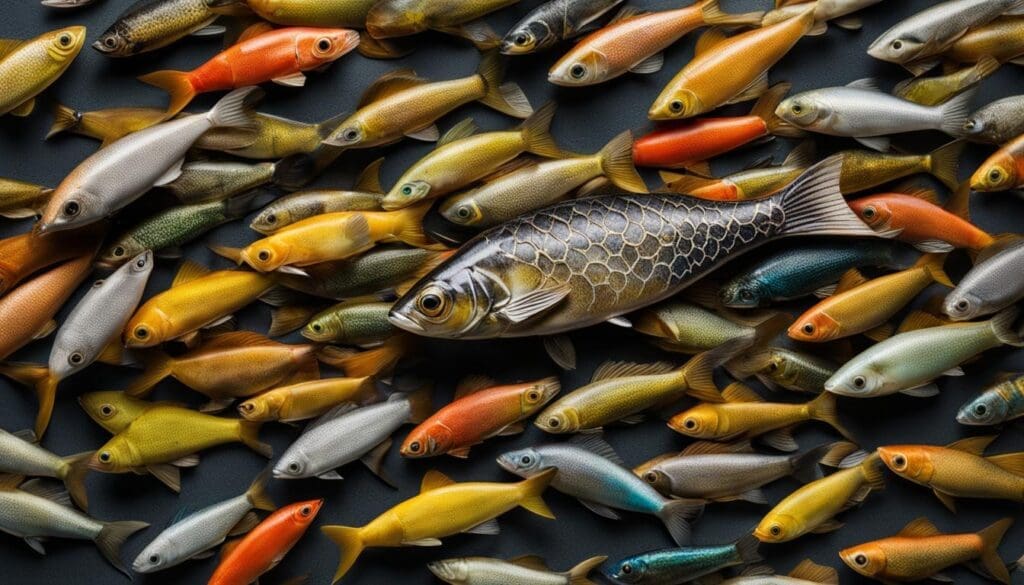
Green Bait Alternatives: Innovations in Sustainable Angling Tips
As awareness around ecological preservation grows, anglers worldwide are adopting innovative green bait alternatives. These range from using biodegradable alternatives to plastic lures, to non-toxic fishing weights made from materials like tungsten or steel. These efforts show a collective movement towards minimizing the potential for environmental hazards such as lost or ingested sinkers. The future of fishing relies not only on the fish stocks of today but also on the pristine nature of our waterways for decades to come.
- Eco-friendly fishing lures—safer for the water and wildlife
- Green fishing tactics—improving our approach to angling with sustainability in mind
- Biodegradable plastic—innovation leading the charge in reducing environmental impact
- Environmentally friendly baits—making every cast count towards conservation
Eco-Friendly Baits: A Dive into Sustainable Bait Choices
In the pursuit of eco-conscious fishing, the sector has witnessed a discernible momentum towards sustainable bait choices. This conscientious shift is not only a statement of solidarity with our environment but also a critical step in ensuring the enduring viability of fishing traditions. Anglers who once may have relied heavily on live bait are now looking towards artificial baits as a means to decrease their ecological footprint. By electing to use synthetics that simulate the appeal of live bait, these environmentally aware fishermen are playing a crucial role in reducing the stress on natural fish populations and habitats.
Fishing gear crafted from recycled materials further underscores the commitment to an earth-friendly approach. From waders to tackle boxes, the rise of recycled products in the angling marketplace is a testament to the growing demand for sustainable fishing gear. Not only does this invite a reduced demand for the generation of new plastics, but it also diverts existing waste from landfills, contributing to a circular economy specific to the needs of the environmentally conscious angler.
- The use of artificial baits contributes to lesser disruption of aquatic ecosystems than traditional live bait.
- Recycled materials serve as the foundation for a new generation of sustainable fishing equipment.
- Choosing gear made from recycled content supports broader ecological goals and reduces the angler’s carbon footprint.
- Sustainable bait selections are becoming more varied and effective, allowing eco-friendly practices to flourish without compromising the fishing experience.
To further illustrate the practical manifestations of these trends, consider the following comparison of gear made from traditional and recycled materials:
| Gear Type | Traditional Materials | Recycled Materials |
|---|---|---|
| Fishing Line | Non-degradable Monofilament | Recycled Monofilament Options |
| Waders | New Synthetics | Eco-Waders made of Upcycled Plastics |
| Tackle Boxes | Virgin Plastics | Post-Consumer Recycled Plastics |
| Baits | Live Bait from Natural Habitats | Artificial Biodegradable Alternatives |
| Weights/Sinkers | Lead-Based | Non-Toxic Metals like Steel or Tungsten |
This transformative approach to angling practices highlights the myriad ways in which individuals can actively participate in conservation efforts. Through the mindful selection of baits and tackle, and the adoption of gear produced from recycled inputs, each angler casts a vote in favor of a more sustainable and ecologically responsible future.
Selecting Sustainable Fishing Gear for Conservation-Minded Anglers
Conscious choices in fishing gear are more than just a personal preference; they are part of a broader, eco-sensitive angling philosophy. Embracing sustainability in fishing practices is instrumental in preserving aquatic ecosystems and ensuring the health of fish populations. Here, we delve into the specifics of selecting fishing gear that aligns with environmentally responsible angling principles.
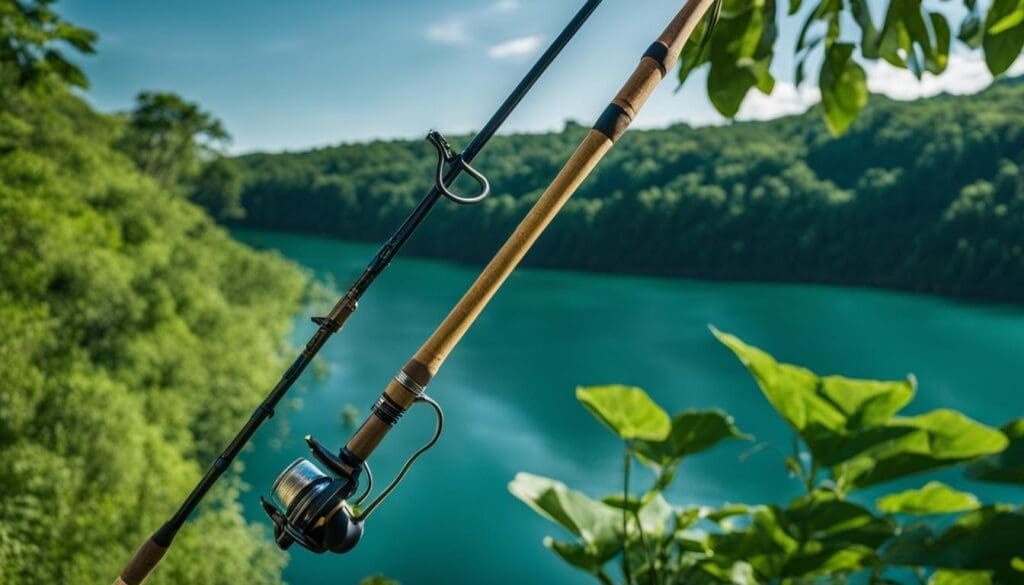
Non-Toxic Materials for Fishing Weights and Sinkers
Modern anglers are no longer satisfied with traditional lead-based tackle due to its harmful environmental impact. Instead, non-toxic fishing weights and sinkers have become the cornerstones of eco-friendly fishing. Materials such as brass, steel, and tungsten are gaining popularity as sustainable substitutes. These environmentally benign alternatives not only reduce the angler’s ecological footprint but also enhance the well-being of our waterways.
| Material | Benefits |
|---|---|
| Steel | Highly durable and widely available |
| Brass | Corrosion-resistant with minimal environmental impact |
| Tungsten | Denser than lead, allowing for smaller, less intrusive weights |
| Tin | Non-toxic and cost-effective for anglers |
The transition to non-toxic alternatives is a testament to the community’s dedication to environmentally responsible angling. Not only are these materials safer for the environment, but they also offer anglers a premium experience with minimal ecological repercussions.
Circle Hooks and Knotless Nets: Why They Matter
Aside from non-toxic weights, another significant stride in the pathway to sustainable fishing practice is the adoption of circle hooks. Designed to curtail internal injuries in fish during catch-and-release, circle hooks epitomize responsible angling. These hooks ensure the safety of fish during the catch, greatly increasing their survival rates post-release.
Furthermore, knotless nets have become essential tools for anglers prioritizing the welfare of fish populations. Unlike traditional nets, knotless nets are designed to prevent the damaging effects of entanglement, thus protecting the integrity of delicate fish scales and slime coats.
- Circle hooks contribute to the safe catch-and-release of fish
- Knotless nets help preserve fish during the capture process
- Both gear choices support the conservation of fish populations
By selecting non-toxic fishing weights, circle hooks, and knotless nets, conservation-minded anglers can enjoy the sport while contributing to the sustainability of the aquatic environment. These advancements in fishing technology serve as vital investments in the longevity and prosperity of our treasured marine and freshwater resources.
The Role of Biodegradable Fishing Lines in Sustainable Angling
Biodegradable fishing lines represent a breakthrough in sustainable angling, a movement that aligns with the present need for environmental conservation. These eco-friendly fishing lines are designed to alleviate the devastating impact traditional monofilament lines have on marine life and habitats. A typical fishing line can linger for centuries, ensnaring wildlife and disrupting ecosystems long after it has been discarded. In stark contrast, biodegradable options offer a lifeline to the environment.
Manufacturers of biodegradable monofilament have taken great strides in creating products that combine ecological benefits without compromising on the quality and durability demanded by anglers. The technological innovation behind these lines means they perform just as well as traditional lines, but with the critical advantage of breaking down in a fraction of the time when lost or left behind.
However, the push for sustainability does not rest solely on the shoulders of product innovation. It’s equally nurtured by responsible practices such as recycling and proper disposal of fishing gear. Communities are coming together to establish recycling programs specifically for fishing lines, reducing the flow of harmful waste into our waters.
To encourage and facilitate responsible disposal, many fishing locales now house collection bins dedicated to discarding used monofilament lines, which are then repurposed or recycled. This concerted effort between manufacturers, retailers, local authorities, and anglers themselves is a testament to the growing dedication to eco-friendly fishing lines and practices.
- Choose biodegradable monofilament to minimize environmental impact
- Look for local recycling programs to dispose of old lines responsibly
- Support brands that offer eco-friendly fishing lines and encourage sustainable practices
- Contribute to conservation efforts by being mindful of gear disposal
In the pursuit of preserving the beauty and vitality of our aquatic ecosystems, it is vital that we, as anglers and stewards of the environment, commit to the use of biodegradable fishing lines. This commitment not only embodies the essence of sustainable angling but also protects our natural resources for future enjoyment and sustenance.
Eco-Conscious Bait Selection: Making Informed Choices
Within the realm of environmentally safe fishing, the power of choice holds a critical influence on the health and continuity of aquatic ecosystems. Today’s anglers are increasingly taking responsibility, recognizing that each decision made on the water can leave a lasting impact beneath it. Through the adoption of eco-conscious bait selection and utilizing low-impact fishing lures, we contribute to a cycle of sustainability that not only offers immediate gratifications but also ensures the endurance of the sport for years to come.
How Choosing the Right Tackle Can Preserve Aquatic Habitats
When selecting tackle, anglers now contemplate the broader ecological narrative. The decision to use bait and tackle that prioritize the environment reflects an understanding that our aquatic playgrounds need safeguarding. By embracing baits that are non-intrusive and designed to have minimal to no long-lasting presence in the water, we actively partake in preserving these aquatic habitats for diverse species that comprise these complex systems.
Low-Impact Fishing Lures and Their Benefits to the Environment
At the heart of this shift is the transition to low-impact fishing lures. These innovative alternatives, formulated from materials that break down more readily in the environment, mark a stark contrast to their traditional, more harmful counterparts. As these eco-friendly options dissolve over time, they significantly diminish the risks that lost or abandoned tackle pose to wildlife and delicate aquatic environments.
- Reduced risk of wildlife entanglement and ingestion
- Minimized introduction of pollutants to waterways
- Support for the balance of natural food chains
- Endorsement of sustainable angling culture
Practicing environmentally safe fishing is not an isolated activity but a collaborative endeavor. By aligning ourselves with the principles of strength and sensitivity inherent in eco-conscious baits and lures, we take an affirmative step towards nurturing a habitat that will continue to thrive. The pursuit of these novel alternatives is more than a personal achievement; it’s a communal conservation milestone.
Practical Tips for Sustainable Fishing Gear Maintenance
Embracing sustainable fishing gear maintenance is not only beneficial for our environment but ensures the longevity of your fishing equipment. By actively participating in eco-friendly fishing strategies, anglers can make a considerable difference in preserving our waterways for future generations. Comprehensive care incorporates responsible recycling tactics and proper disposal of fishing tackle. These measures effectively reduce pollution, reinforcing a commitment to conservation while nurturing a healthy angling community.
Recycling Old Fishing Gear
One of the keystones of maintaining an eco-friendly fishing approach is recycling fishing gear. Many waterfront establishments, such as local bait shops and marinas, facilitate the collection and recycling of old gear. For instance, monofilament lines are notoriously durable and can severely harm aquatic life if left in the environment. By taking advantage of these recycling programs, anglers ensure that these materials are repurposed, thereby mitigating potential ecological damage. These simple acts of responsibility solidify an angler’s contribution to sustainable practices within the fishing community.
Proper Disposal Methods for an Eco-Friendly Fishing Experience
When recycling is not available, understanding and executing proper disposal methods becomes crucial. Discarded gear, especially plastics, pose a significant threat to marine ecosystems. Through eco-conscious disposal, anglers avoid contributing to harmful waste that can injure wildlife and disrupt their habitats. Sustainable fishing gear maintenance, therefore, encompasses diligence in both recycling and discarding unusable items. Moreover, supporting sustainable brands that produce equipment from recycled materials further bolsters eco-friendly fishing initiatives, demonstrating an angler’s dedication to ecological conservation and sustainable angling efforts.
FAQ
What are sustainable angling tips?
Sustainable angling tips include using biodegradable or eco-friendly bait options, adhering to fishing regulations, choosing lead-free sinkers and non-toxic tackle, practicing catch and release with the right equipment, and overall, making choices that reduce the negative impact on the environment, thus promoting fishing sustainability.
How do traditional fishing tackles impact ecosystems?
Traditional fishing gear often contains plastics and heavy metals like lead, which can linger in the environment for centuries, posing threats to wildlife through ingestion or entanglement. Lead sinkers cause toxicity in water bodies, and non-biodegradable fishing gear contributes significantly to marine pollution and habitat destruction.
Why are biodegradable fishing baits important for the environment?
Biodegradable fishing baits are designed to break down more quickly than traditional plastic baits, reducing the amount of waste and pollution in waterways. This helps in preserving marine life and maintaining the health of aquatic ecosystems.
What regulations should I be aware of when fishing?
Anglers need to be aware of various fishing regulations including the requirement to get a fishing license, adhering to bag and size limits, abiding by seasonal restrictions, and ensuring compliance with local conservation controls designed to protect fish populations and their habitats.
What are eco-friendly baits and lures?
Eco-friendly baits and lures are made from biodegradable materials or non-toxic substances, like biodegradable plastic, that can resemble live bait without the environmental drawbacks. They are designed to attract fish effectively while minimizing the impact on the ecosystem after use.
How do green bait alternatives contribute to sustainable angling?
Green bait alternatives often include innovations like biodegradable lures or artificial baits that do not harm the environment. They offer effective solutions for fishing that do not entail depleting live bait populations or leaving harmful residues in the water, thus contributing to more sustainable angling practices.
What sustainable bait choices can anglers make?
Anglers can choose artificial baits, select lures made from biodegradable materials, and use gear made from recycled materials. Eco-conscious bait choices help avoid the overharvesting of natural bait and reduce the angler’s environmental footprint.
Why are non-toxic materials for fishing weights and sinkers recommended?
Non-toxic materials such as tungsten, steel, or brass are recommended because, unlike lead, they do not pose the same environmental and health risks if they are ingested by wildlife or end up in the water supply.
What is the significance of circle hooks and knotless nets in sustainable fishing?
Circle hooks are designed to hook the fish in the mouth rather than the gut, reducing internal harm and increasing survival rates in catch-and-release fishing. Knotless nets are gentler on fish’s scales and mucous membranes, reducing injury during capture and contributing to healthier fish populations.
How do biodegradable fishing lines support sustainable fishing practices?
Biodegradable fishing lines are designed to break down much faster than traditional lines if lost or discarded. This mitigates the risk of wildlife entanglement and long-term environmental contamination, supporting more sustainable fishing practices.
How can the right tackle choices preserve aquatic habitats?
Choosing the right tackle involves selecting environmentally safe fishing lures and eco-conscious bait selection. Opting for low-impact fishing lures reduces the potential for environmental damage, leading to better conservation of aquatic habitats and supporting biodiversity.
What are the benefits of low-impact fishing lures?
Low-impact fishing lures, typically made from biodegradable materials, offer the benefit of minimizing environmental hazards when lost or left behind in the water. They are designed to break down more rapidly, preventing pollution and reducing harm to aquatic life.
What should I do with old fishing gear?
Old fishing gear can often be recycled through programs available at local bait shops or marinas. If recycling is not an option, it’s important to dispose of gear responsibly, ensuring that it doesn’t contribute to environmental degradation.
Why is proper disposal of fishing gear important for an eco-friendly experience?
Proper disposal helps prevent gear from becoming marine debris, which could entangle wildlife or add to pollution. Sustainable disposal methods and participating in recycling programs are essential components of an environmentally conscious fishing practice.
